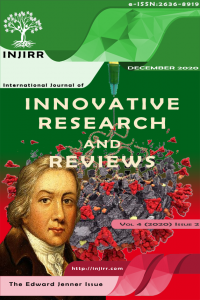Investigation of Compressive Strength of Plaster and Masonry Mortar Prepared with Waste Stone Dust, Nano Carbon Black and Cement
Abstract
Mortar and concrete produced by replacing the cement or aggregate in the traditional concrete mixture or a certain proportion thereof with natural or artificial mineral admixtures are becoming increasingly common. With these admixtures, the properties of fresh and hardened mortar are aimed to be improved. Wall and plaster mortars are expected to be as durable and waterproof as bricks. Especially, the freezing-thawing resistance of exterior plaster materials and flooring materials should be high. In addition, soil surfaces are susceptible to wind and water erosion effects. It is known that such surfaces are covered with abrasion-resistant plaster material in order to protect it against abrasion on soil surfaces. In this study, the usability of the mixture obtained by incorporating waste materials, such as stone dust and nano carbon black, with a certain amount of binder, such as cement, as ready plaster, masonry mortar or ground coating material are investigated. When soil surfaces under the effect of wind and water erosion are covered with the mortar obtained with this fine powdered ready-made material, a strength against erosion will be displayed. If the material meets the current standards in terms of both tension and durability, it can be put on the market as a ready-made plaster mixture in 20-40 kg bags in fine powder form. Currently, nano carbon black is available on the market in 20 kg paper bags. Stone dust is found in mining companies that process mud or rock in dry form.
Keywords
References
- [1] Celik T, Marar K. Effects of crushed stone dust on some properties of concrete. Cement and Concrete research (1996) 26(7):1121–1130.
- [2] TS 706-EN 12620. Aggregates for Concrete. Ankara: Turkish Standards Institute Ankara (2003).
- [3] Dixit MS, Patil KA. Utilization of Stone Dust to Improve the Properties of Expansive Soil. International Journal of Civil Engineering and Technology (IJCIET) (2016) 7(4):440–447.
- [4] ASTM C33-11. Standard specification for concrete aggregates. West Conshohocken: ASTM International (2015).
- [5] Özgan E. The Effect of Stone-Dust Quantity in Aggregate on the Compressive Strength of Concrete. Erciyes University Journal of Science Institute (2005) 21(1-2):198–205.
- [6] Ramyar K, Çelik T, Marar K. Taş Tozunun Beton Özelliklerine Olan Etkisi-Endüstriyel atıkların İnşaat Sektöründe Kullanılması [Effect of Stone Dust on Concrete Properties-Using Industrial Wastes in Construction Industry]. In: İnşaat Mühendisleri Odası Bildiriler Kitabı [Book of Proceedings of Chamber of Civil Engineers]. Ankara: TMMOB (1995).
- [7] Şengül S, Taşdemir MA, Koç İ, Tarhan M, Erenoğlu T. Design, Mechanical Properties and Durability of Concretes Containing Natural and Industrial Mineral Additives. In: Congress Symposium Memorandum Book. (2007). p. 281.
- [8] Germi M.H. B. SAGSOZ AE. Effects of Recycled Nano Carbon Black on Some of Physical and Mechanical Properties of Concrete. Ataturk University. Erzurum (2016). [9] Wikipedia. Porphyry [cited 2020 May 26]. Available from: https://en.wikipedia.org/wiki/Porphyry_(geology).
- [10] Arkoç O. Nene Hatun Tunnel (Izmir) ’Q’ Application of rock classifications (1+ 504.00 -1 + 314.30KM. Trakya Üniversitesi Fen Bilimleri Dergisi 3(2):113–122.
- [11] Donnet J-B. Carbon black: science and technology. In: Donnet J-B, Bansal, C, R., Wang M-J, editors. Carbon Black Industry. USA: CRC Press (1993).
- [12] Ișık F, Akbulut RK. Effect of recycled carbon black on consistency limits of clayey soils. Journal of the Institute of Science and Technology (2018) 8(2):123–130.
- [13] TS EN 197-1. Turkish standard for cement—Part 1: compositions and conformity criteria for common cements. Ankara: Turkish Standards Institute (2012).
- [14] TS EN 13279-1. Turkish standard for Gypsum binders and gypsum plasters - Part 1: Definitions and requirements. Ankara: Turkish Standards Institute (2009).
- [15] ASTM D421-85. Standard Practice for Dry Preparation of Soil Samples for Particle-Size Analysis and Determination of Soil Constants. West Conshohocken: ASTM International (2007).
- [16] ASTM D4318. Standard Test Methods for Liquid Limit, Plastic Limit, and Plasticity Index of Soils. West Conshohocken: ASTM International (2007).
- [17] Alawode O, Idowu OI. Effects of water-cement ratios on the compressive strength and workability of concrete and lateritic concrete mixes. The Pacific Journal of Science and Technology (2011) 12(2):99–105.
- [18] Ukpata JO, Ephraim ME, Akeke GA. Compressive strength of concrete using lateritic sand and quarry dust as fine aggregate. ARPN Journal of engineering and applied sciences (2012) 7(1):81–92.
Details
| Primary Language | English |
|---|---|
| Subjects | Engineering |
| Journal Section | Research Articles |
| Authors | |
| Publication Date | December 15, 2020 |
| Submission Date | June 23, 2020 |
| Published in Issue | Year 2020 Volume: 4 Issue: 2 |


